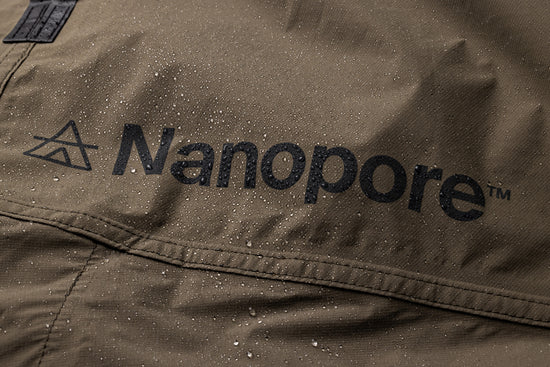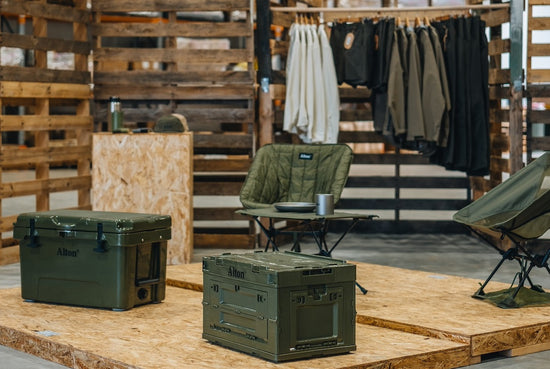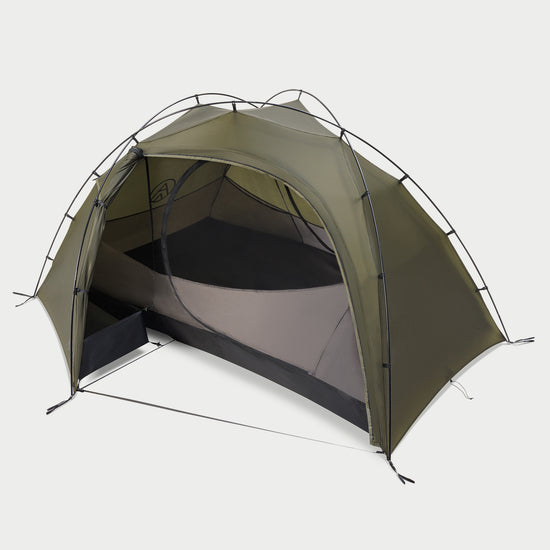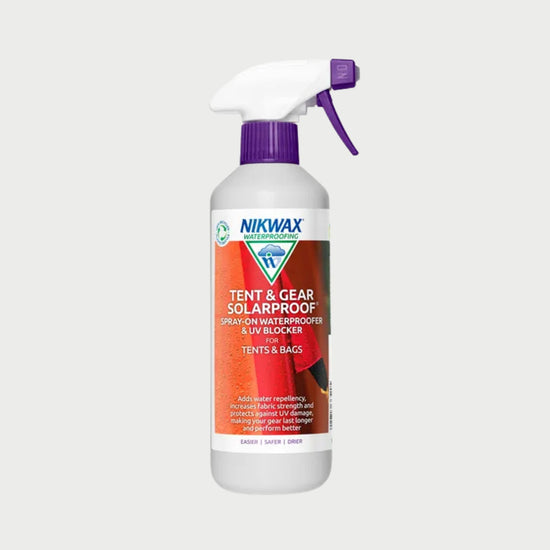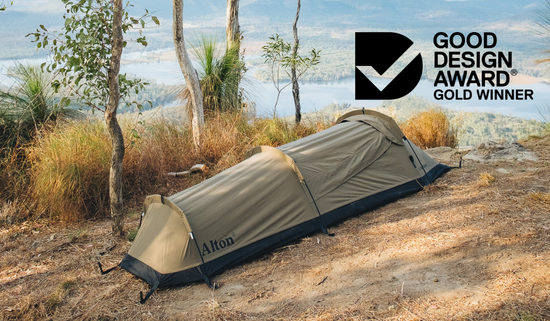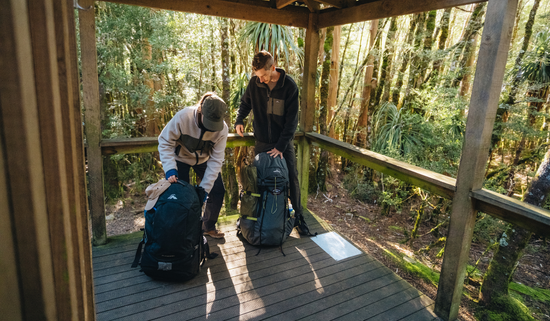Tents are made to shelter you, and give you a safe, comfortable place to call home in the wild.
But we can all agree that tents have to put up with a lot of sh*t.
Sub-par campsites strewn with debris...Horrible weather conditions for days on end because you didn’t check the forecast… Mysterious noises in the night that definitely weren’t ‘just the wind’.
So in return, the least you can do is take good care of it.
Caring for your tent isn’t hard. All it takes is a bit of cleaning here, a touch of waterproofing treatment there… But for many of us, tent care is at the bottom of the list of things to do after we get back from a trip.
While this might not be a problem in the short term, over the long run, neglecting to properly care for your tent will have a negative impact on its performance – and your wallet, when you end up having to replace your tent sooner than you would have liked.
So in today’s guide, we’ll take you step by step through how to clean, dry, and store your tent properly, so that you get the best performance out of it for years to come.

Why Does Tent Care Matter?
Before we dive into HOW to care for your tent, it’s worthwhile unpacking WHY tent care matters in the first place.
Your tent is easily one of the most important items in your camping gear kit. It’s your shelter, your protection from the elements, and your comfort zone – it might just be a thin layer of fabric between you and the wilderness, but it’s enough to make you feel safe and secure in the wild.
Taking care of your tent is important for several reasons:
1. It extends the lifespan of your tent.
With proper care and maintenance, a high-quality tent for camping can last you for a decade or more (depending on how much you use it, of course). On the flip side, if you don’t take care of your tent, you can dramatically reduce its lifespan.
2. It saves you money in the long run.
Good backpacking tents aren’t cheap. If you don’t take care of your tent, you’re going to end up spending a lot of money replacing it sooner than you otherwise would.
3. It lowers the environmental impact of your tent.
All hiking gear has an inherent environmental impact due to the materials, manufacturing, shipping, etc. that goes into making it. One of the most effective ways to offset this impact is to keep your gear in use for as long as possible – and to do that, you need to take care of it.
4. It ensures that your tent stays waterproof.
Waterproof fabrics lose effectiveness over time. Fortunately, in most cases, it’s relatively easy to replenish them using a suitable waterproofing treatment. However, if your tent is poorly maintained, the deterioration of the fabric happens faster, and may even be irreversible.
5. It helps prevent avoidable mistakes in the wild.
By taking steps to care for your tent after each trip, you’re able to identify and address any little issues before they get out of hand. A little effort after each trip means you’ll spend less time fixing problems and more time enjoying the wilderness.

How to Clean, Maintain and Store Your Tent
Alright, say you’ve just got back from a camping trip. What next?
What you DON’T want to do is leave your tent stuffed away in its carry bag for days on end. A little care right after your trip will save you a lot of effort (and bad smells) in the future.
How to clean your tent after a camping trip:
1. Unpack your tent.
Unpack your tent and inspect both the inner and the fly. If it’s looking clean, simply give it a shake or brush out any debris from inside, then you can jump ahead and hang your tent up to dry (step 4).
2. Spot clean your tent.
Use a damp cloth or sponge and some lukewarm water to gently wipe off any dirty marks on your tent. You can use a suitable outdoor gear wash if you feel like it needs it.
3. Wash your tent.
If your tent is really grimy, dusty or smells bad, then you can proceed with a complete clean. Do this in stages, cleaning the tent body, outerfly, and footprint separately.
Start by filling your bathtub or a large sink with lukewarm water and a small amount of suitable outdoor gear wash. Submerge the tent and leave to soak for up to 20 minutes before cleaning by hand, using a cloth or sponge to work over the fabric. Rinse your tent thoroughly with clean water until the water runs clear and all soap residue is gone. Then, repeat the process for the other parts of the tent if necessary.
Avoid hot water, harsh detergents, and abrasive scrubbing, as this can damage the fabric and waterproof coatings.
4. Leave to dry completely.
Hang your tent up on a clothesline or over a rack in a dry, well-ventilated area out of direct sunlight and leave it for several hours until dry. It’s essential that you allow your tent to dry completely before packing it away, as any remaining moisture can lead to mildew growth or damage the waterproof coatings by causing hydrolysis. For this reason, we recommend leaving your tent out to dry for 8-12 hours at least before packing it away.

How to maintain your tent:
Once your tent is clean, you can move on to performing any necessary maintenance. You won’t necessarily need to do all of these maintenance suggestions after every trip, but it’s worth knowing what you should be on the lookout for.
1. Check your tent for signs of damage or wear and tear.
Give your tent a once over for tears, holes, or worn spots in the tent body, fly and footprint. Make sure to inspect the seams for peeling seam tape, and test the zippers to see if they’re working smoothly. Check over the poles, guylines, and tent pegs, making sure that all of them are still in good condition.
2. Repair any damage you find.
If you do spot any signs of damage, go ahead and repair them using a suitable repair patch or tape. For fabrics treated with a silicone-based waterproof coating (such as the outer fly of Alton’s tents), Gear Aid Tenacious Tape Silnylon Patches will provide the best results, although standard Repair Tape works well, too. To repair damage to the mesh of your tent body, use Mesh Patches.
3. Clean and lubricate zippers.
We recommend being proactive with your zipper care. Depending on how often you use your tent, cleaning and lubricating the zippers once or twice a year can help keep them in good condition for longer. Start by using a soft brush or toothbrush to remove grit, sand, or dirt from the zipper teeth, and then apply the zipper lubricant. Slide the zipper back and forth a few times to spread the product, being gentle so as not to damage the teeth. Leave to dry for an hour or two before packing away.
4. Reseal seams with seam sealant.
If you notice that the seam tape on your tent is beginning to peel in places, then it’s possible to reseal them using a suitable seam sealant (make sure it’s designed to work on the fabric/coating type of your tent). Follow the instructions that come with the sealant, applying along the seams, and leave to dry fully before packing away your tent. Note, some seam sealers require up to 24 hours to cure or need to be heated after application. Make sure to read the instructions before you begin.
5. Replenish waterproof coatings.
DWR waterproof coatings lose effectiveness over time. For this reason, you may want to replenish the DWR coating once a year or so (depending on how frequently you use your tent) by using a suitable product, such as the Nikwax Tent & Gear SolarProof Spray.
6. Inspect tent poles, guylines and other components.
Tent poles, guylines, and all the other components (pegs, buckles, line locks, etc.) all take a lot of stress, so it is important to check them over occasionally to make sure they’re all in good working order. Repairing or replacing any components that are damaged can help you prevent mishaps from occurring in the wild.

How to store your tent:
Once you’ve cleaned, inspected, and repaired your tent, it’s time to pack it away. Make sure everything is completely dry, and then store your tent in a cool, dry place away from direct sunlight.
If you’re going to be storing your tent for a long period of time, you might want to consider storing it loosely folded or rolled in a large plastic box or even a suitcase. Storing your tent compressed for a long period of time can lead to kinks in the zippers or cause damage to the fabric.
If you take care of your tent, it will take you further.
After a long, tiring trip, the last thing you feel like doing is unpacking and cleaning your tent, and all your other damp, dirty gear.
We get it.
But taking an extra ten minutes to unpack and hang up your tent (and other gear) to dry will save you a lot of hassle (and money) in the long run.
So stop making excuses and start making gear care a regular part of your outdoor adventure routine today.



